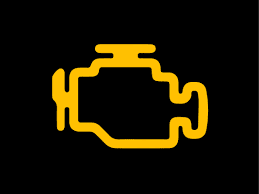Yes, transmission fluid can get low without a visible leak. This situation is less common but can happen due to several reasons.
Transmission fluid is vital for your car’s performance. It lubricates, cleans, and cools the moving parts within your transmission. You might wonder, “How can it get low without a leak? ” Well, there are hidden factors at play. These include internal wear, overheating, and fluid degradation.
As time passes, small amounts of fluid can evaporate or break down. Knowing the signs of low fluid can save you from bigger problems. This guide will help you understand the causes and what to do about them. Stay tuned to learn more about maintaining your transmission’s health.

Credit: www.amazon.com
Introduction To Transmission Fluid Levels
Transmission fluid keeps the gears in your car moving smoothly. It also cools and lubricates the parts. Checking the fluid level is very important. Low fluid can cause damage. This leads to expensive repairs. Always make sure the fluid is at the right level.
The fluid helps your car shift gears. It also prevents overheating. Without enough fluid, your car may not run well. It could even stop moving. Regular checks can save you from trouble.
Fluid can get low due to evaporation. This can happen over time. Another reason is a bad seal. This lets fluid escape. Sometimes, the fluid burns off. This happens inside the engine. Faulty parts can also cause low levels.
Signs Of Low Transmission Fluid
If the transmission fluid is low, the dashboard may show warning lights. These lights can indicate many problems. It’s best to check the fluid level immediately. Low fluid can cause severe damage to your car.
Low transmission fluid can make the car make strange noises. You might hear grinding or whining sounds. These noises mean the parts are not well-lubricated. This can lead to more wear and tear.
Low transmission fluid can make shifting gears hard. The car might jerk or delay when shifting. Smooth shifting needs enough fluid. Without it, the car’s performance drops.
Causes Of Low Transmission Fluid Without Leaks
Transmission fluid can break down over time. Heat and friction cause this. Old fluid loses its properties. It can’t lubricate parts well. This can lead to low fluid levels. Regular checks are essential.
Seals and gaskets inside the transmission can wear out. They may not show visible leaks. But fluid can escape internally. This reduces fluid levels. Worn parts need replacement to avoid damage.
Overheating can cause fluid loss. High temperatures make fluid evaporate. This is common in heavy traffic or with heavy loads. Overheating also damages other parts. Keeping the transmission cool is crucial.
Impact Of Low Transmission Fluid
Low transmission fluid can cause wear and tear. The parts inside the transmission need fluid to stay cool. Without enough fluid, they get too hot. Heat causes damage over time. This can lead to expensive repairs.
Not enough transmission fluid can make your car perform poorly. You may notice slipping gears. Your car might not accelerate smoothly. It can also cause jerky movements while driving.
Continued low fluid levels can cause the transmission to fail completely. This means your car may stop working. Fixing a failed transmission can be very costly. It’s best to check fluid levels often.
How To Check Transmission Fluid Levels
First, park your car on a level surface. Next, locate the transmission fluid dipstick. Pull it out and wipe it clean. Then, reinsert the dipstick fully and pull it out again. Check the fluid level on the stick. It should be between the “full” and “add” marks. Always use the correct type of fluid if you need to add more.
Transmission fluid should be red or pink. If the fluid is dark or smells burnt, this is a bad sign. Clean fluid should not have a burnt smell. Checking the fluid regularly can help you spot problems early. You might save on costly repairs by catching issues early.
Check your transmission fluid every month. Regular checks help keep your car healthy. This is especially important if you drive often. Frequent checks can prevent major issues. Consistent maintenance is key to a long-lasting transmission.

Credit: advancedtransmission.com
Preventive Measures
Transmission fluid can get low without a leak due to internal issues like worn seals or excessive heat. Regularly checking fluid levels and replacing worn parts helps prevent problems.
Regular Maintenance
Keep your vehicle in good shape by doing regular maintenance. Check the transmission fluid often. This helps spot issues early. Change the fluid as needed. Use the car manual as a guide. Regular checks save you from big problems later.
Using The Right Fluid
Always use the correct transmission fluid for your car. Different cars need different fluids. Using the wrong fluid can cause problems. Check your car manual for the right type. This ensures the fluid works well in the system.
Monitoring Driving Habits
Drive smoothly to keep the transmission healthy. Avoid sudden starts and stops. Do not overload your vehicle. Heavy loads put stress on the transmission. Regular driving habits help maintain fluid levels. Be mindful of how you drive.
When To Consult A Professional
Sometimes, transmission fluid levels drop and stay low. This can mean a hidden problem. A professional can check for issues. They have tools to find the cause.
Transmission problems can be hard to solve alone. Issues like gears slipping or strange noises need expert help. Quick fixes may not work. A pro can find and fix the real problem.
Experts use special equipment. This helps them see inside the transmission. They can spot hidden issues. Their knowledge and tools make sure your car runs well.

Credit: www.reddit.com
Conclusion
Low transmission fluid can occur without a visible leak. Internal issues might cause fluid loss. Regular maintenance is key to preventing problems. Check your transmission fluid often. Address any signs of low fluid immediately. This can save you from costly repairs.
Always consult a professional for accurate diagnosis. Keeping an eye on fluid levels ensures smooth vehicle operation. Stay proactive with your car’s health.
